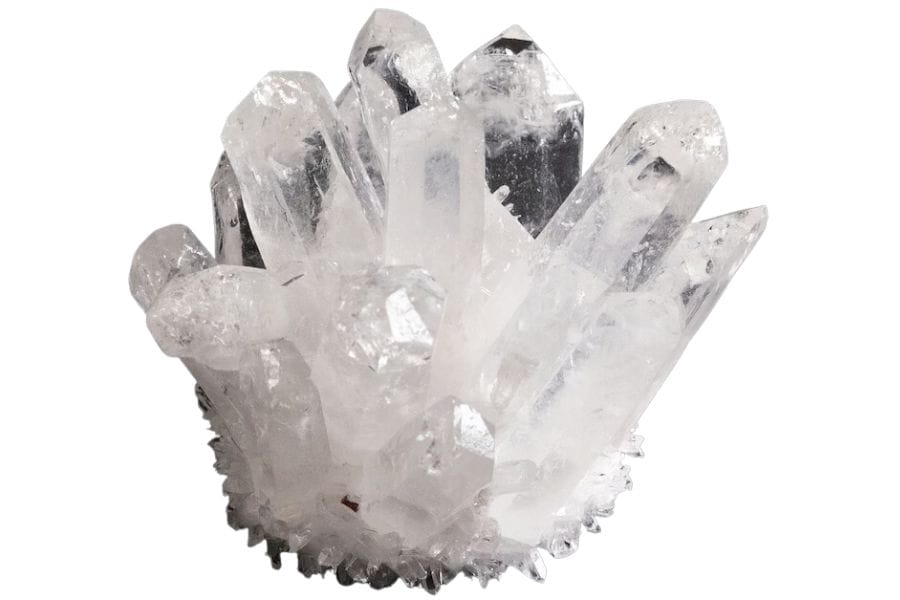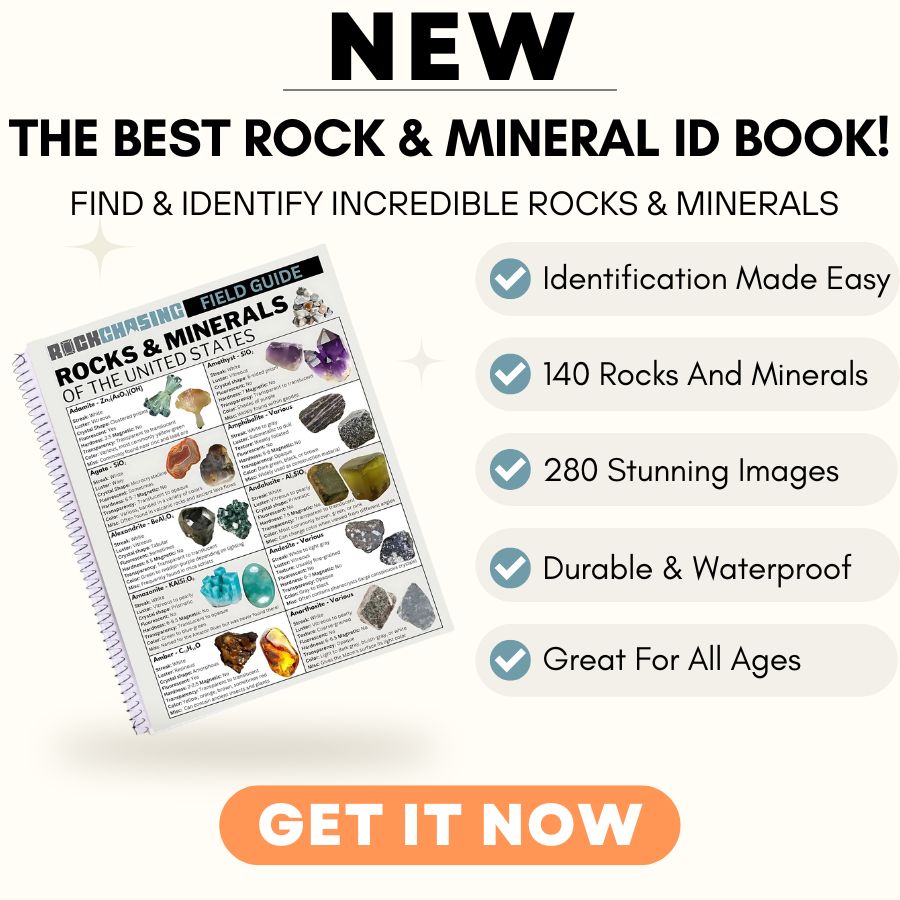Finding crystals can be a rewarding adventure, offering a unique way to explore the natural beauty and geology of the region. Whether you’re a seasoned rockhound or just getting started, knowing where to look is key to uncovering these hidden treasures.
In this state, a variety of locations provide opportunities to discover different types of crystals. From rocky outcrops in the mountains to stream beds that carry sparkling surprises, each area offers its own unique finds for those willing to search.
We can help you get started with some places you can explore for crystals below!
Crystals you can find in the US
The United States offers a wide range of crystals that reflect its diverse geology. From vibrant gems to more subtle mineral formations, there’s something to discover in nearly every region.
Calcite
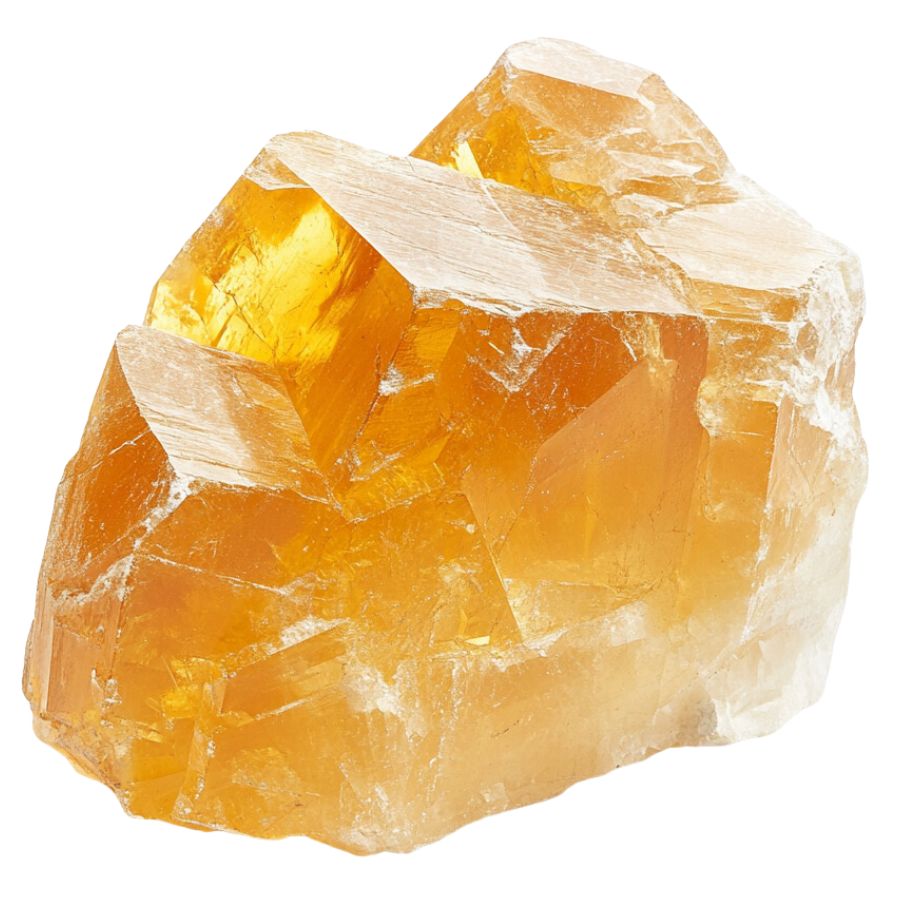
With a variety of forms and a unique property of double refraction, calcite allows objects viewed through the crystal to appear doubled. This mineral can appear in a spectrum of colors, with pure forms typically being transparent or white.
In addition, calcite reacts vigorously with acids, which aids in distinguishing it from other minerals. It also frequently contributes to the structure of sedimentary rocks such as limestone.
Gypsum
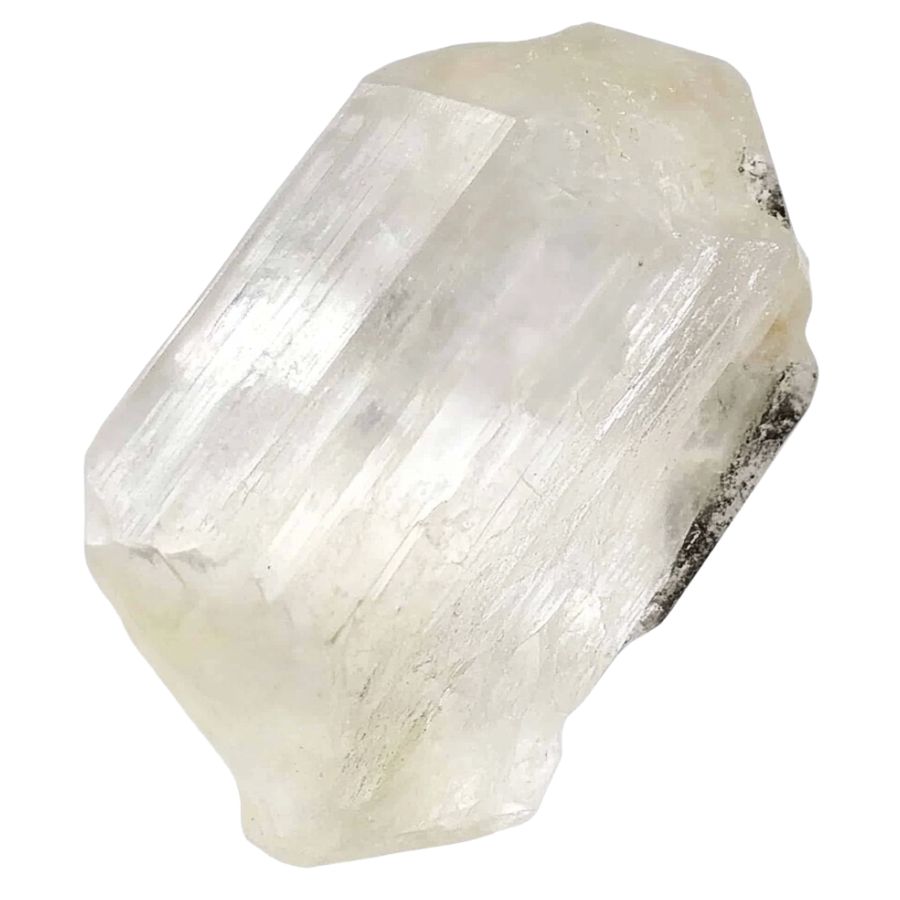
Gypsum’s notable softness allows it to be easily scratched with just a fingernail, often presenting as white or very light-colored in its pure form.
It manifests in both crystalline forms, like selenite, and massive forms such as alabaster, making it versatile in use and appearance.
Gypsum is also essential in the construction industry and is a key component in the manufacture of plaster and drywall.
Fluorite
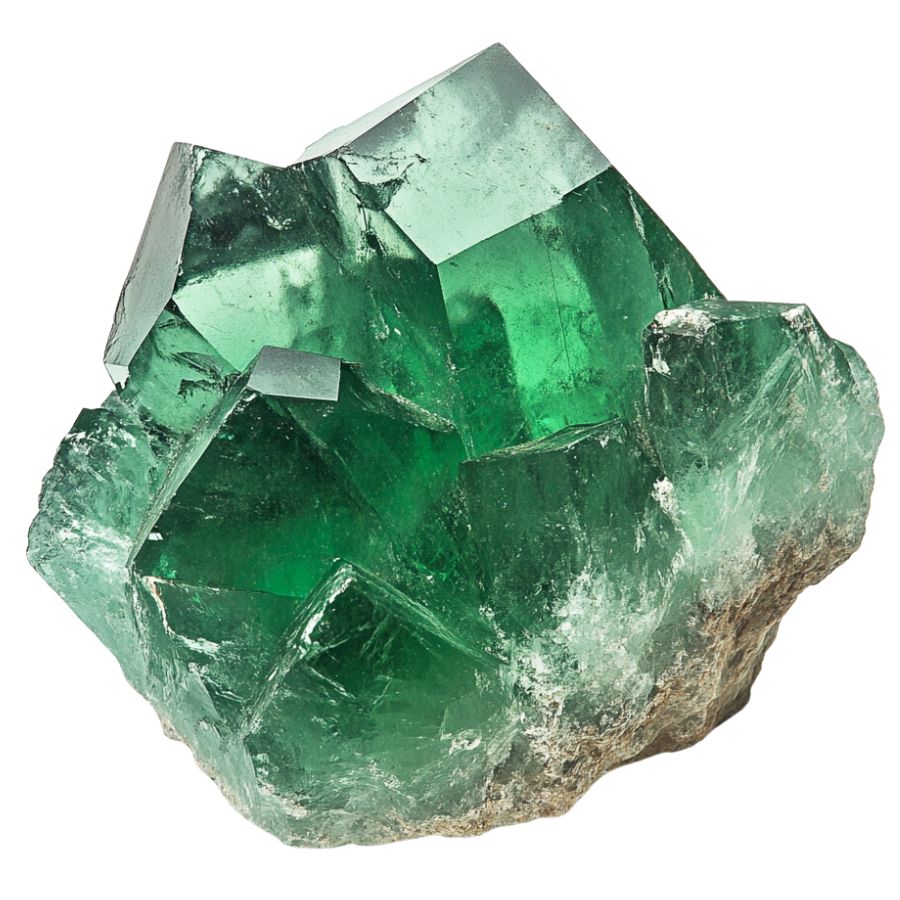
Fluorite comes in a wide range of vibrant colors, including purples, greens, blues, and yellows, and is known for forming in well-defined cubic crystals.
Beyond this, fluorite exhibits fluorescence under ultraviolet light! It can also be used in various industrial applications, including as a flux in steelmaking.
Galena
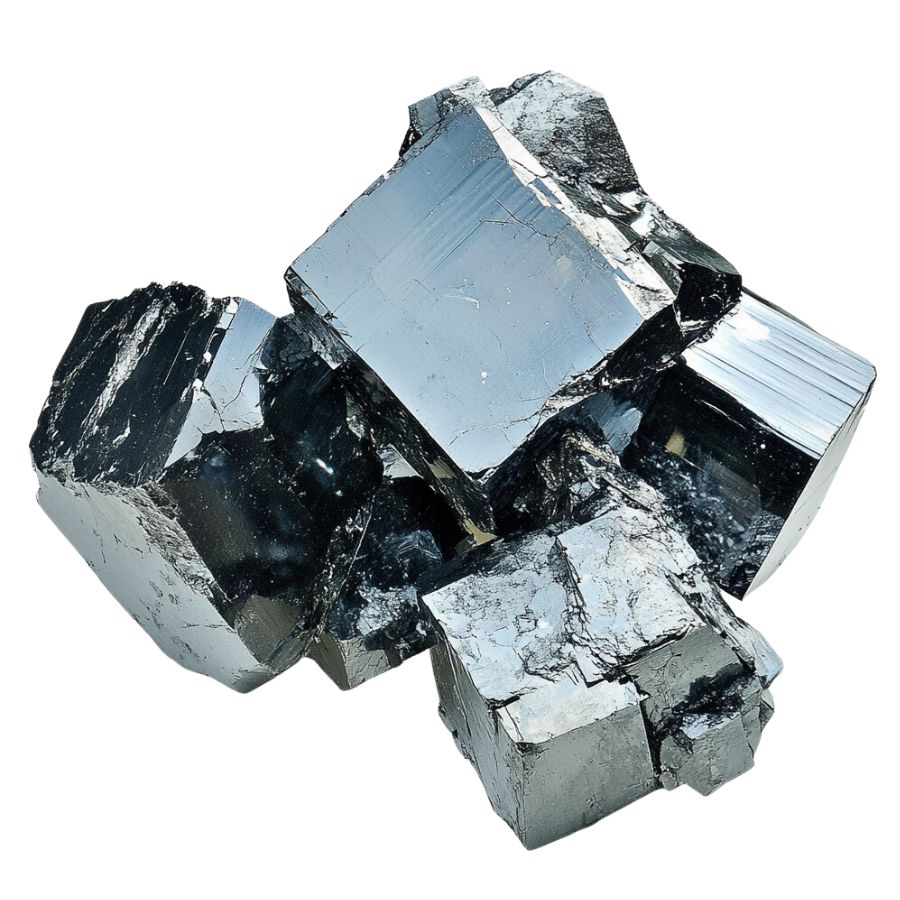
Galena distinguishes itself with a metallic luster and high density, typically found in a cube-like form. It serves as the primary ore of lead, making it important in the metal industry, while its shiny, silver color attracts collectors.
Not only does its appearance make it a subject of interest, but its weight and texture provide tangible lessons in mineral density and metallic properties. Galena also often contains traces of silver, adding to its commercial and educational value.
Corundum
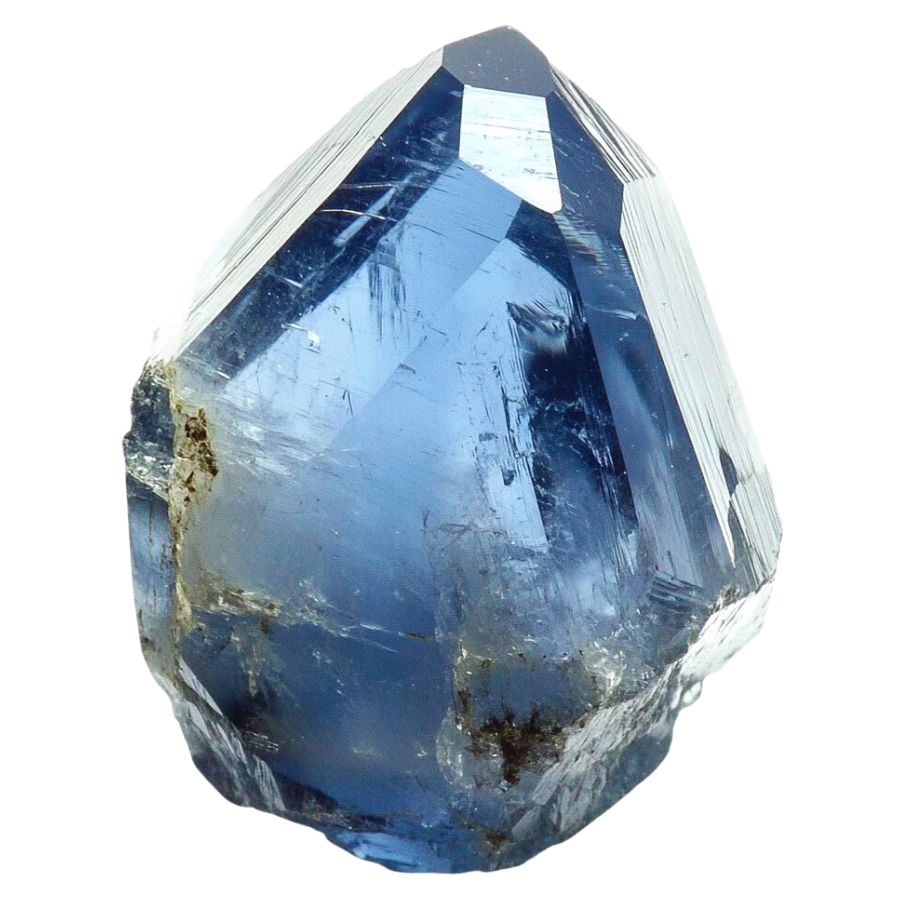
Corundum is a mineral that comes in a variety of colors, though it is typically transparent or gray. Its most famous forms are sapphires and rubies, which are prized for their vibrant blue and red hues.
The mineral is known for its remarkable hardness, ranking just below diamond on the Mohs scale. This durability makes corundum ideal for industrial abrasives and cutting tools, as well as a popular choice for fine jewelry.
Quartz
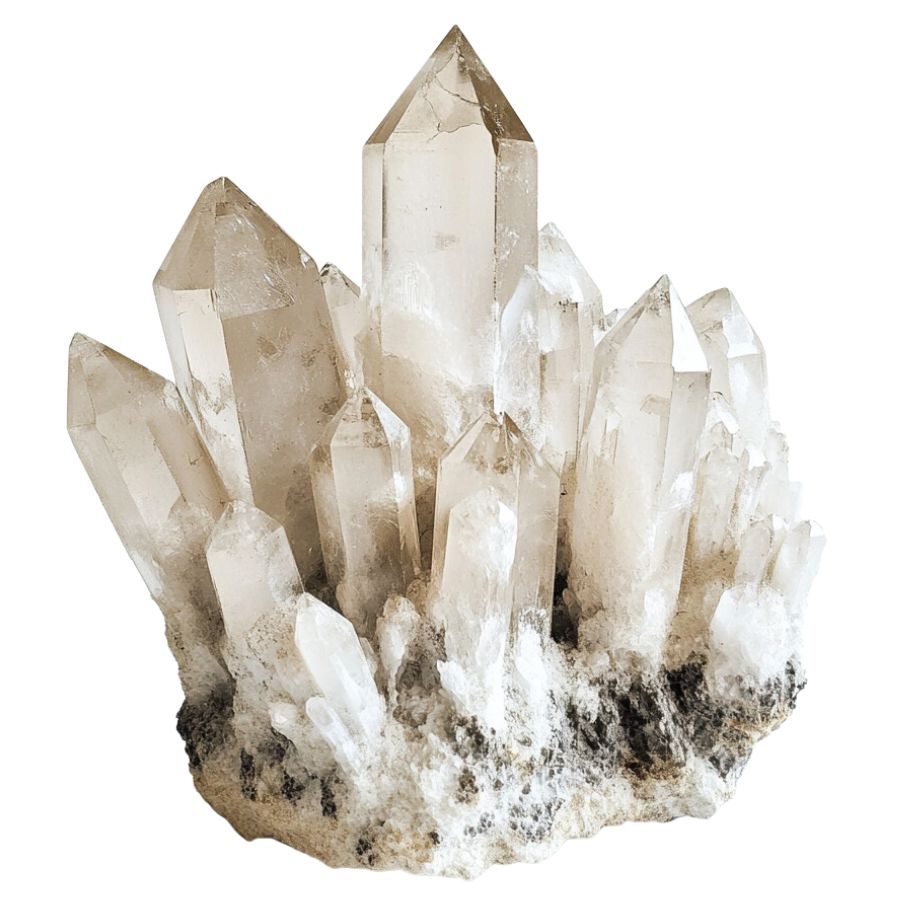
Quartz is among the most common minerals in the Earth’s crust and is prized for its durability and variety. It forms in a wide range of colors and types, from clear rock crystal to purple amethyst.
The mineral is notable for its hardness and durability, which contribute to its use in a variety of applications. Quartz is also popular in the manufacturing of electronics and watches due to its piezoelectric properties, which allow it to convert mechanical pressure into electrical energy.
Pyrite
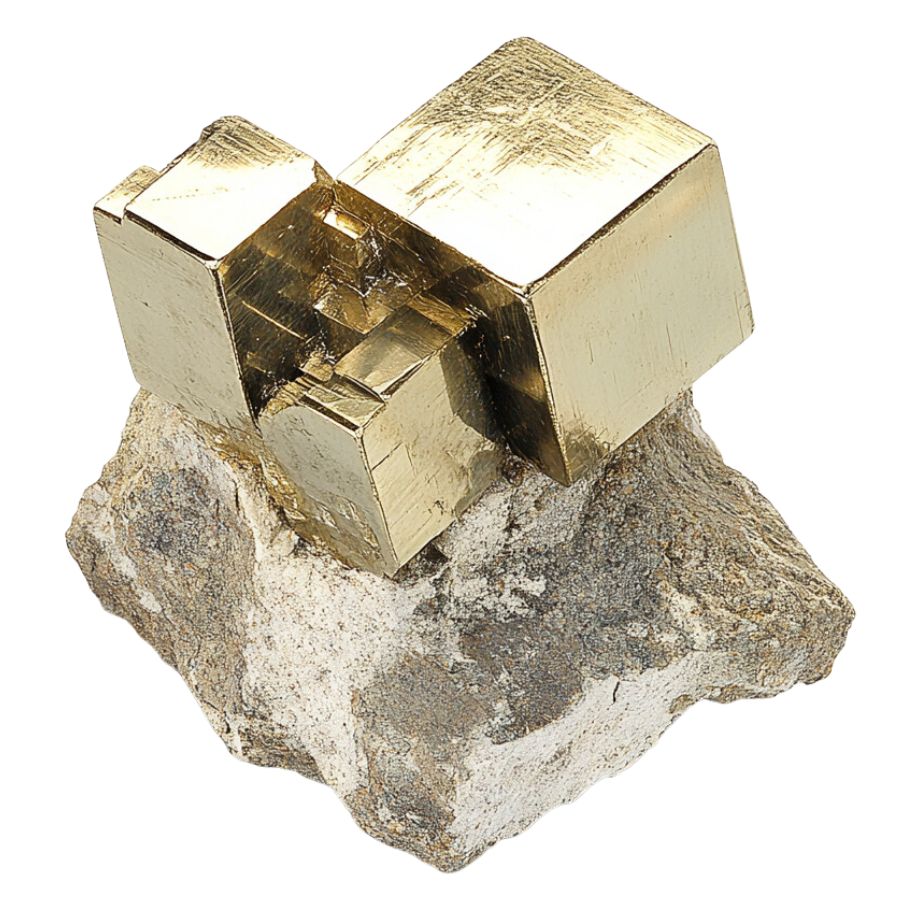
Often mistaken for gold due to its metallic luster and pale brass-yellow hue, pyrite is known colloquially as “fool’s gold.” Its characteristic cube-shaped crystal formations look man-made but are actually completely naturally formed!
Pyrite also has historical importance in producing sulfur dioxide for sulfuric acid production.
Rhodochrosite
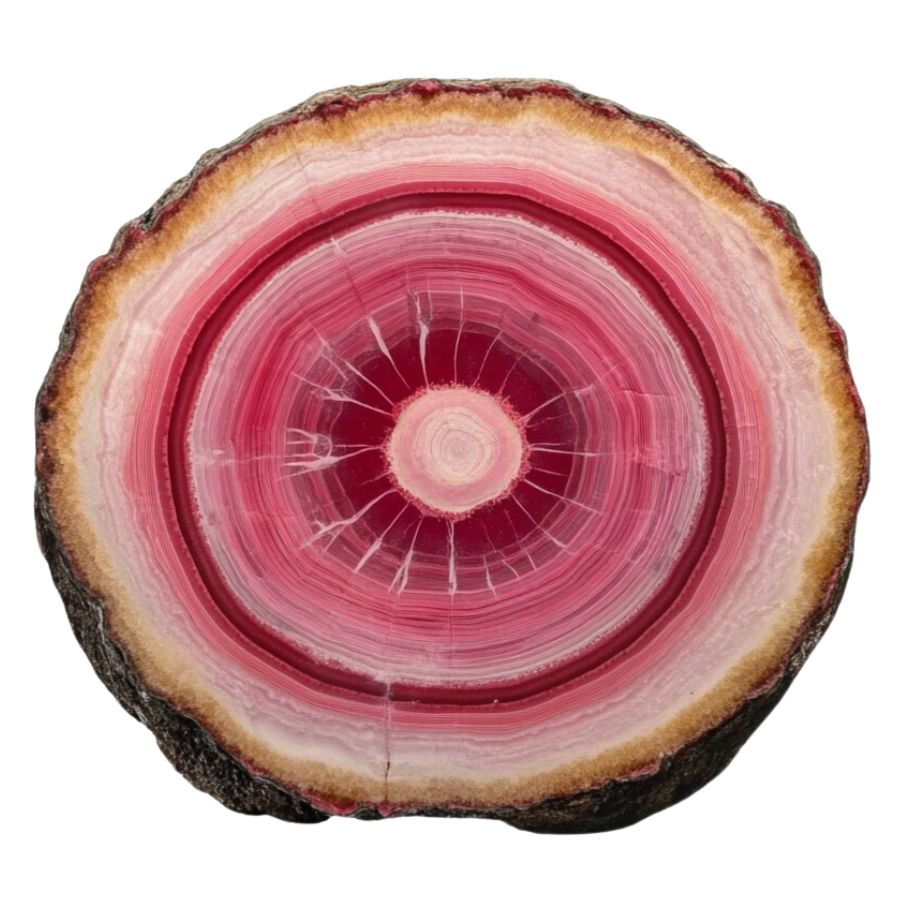
Rhodochrosite stands out with its rich pink and red hues, making it highly desirable as both a mineral specimen and a gemstone.
It typically forms in layered or stalactitic structures, with bands of colors that showcase how it grew over millions of years.
Beyond its beauty, rhodochrosite is significant as the main source of manganese, an essential element used in metal alloys.
Rhodonite
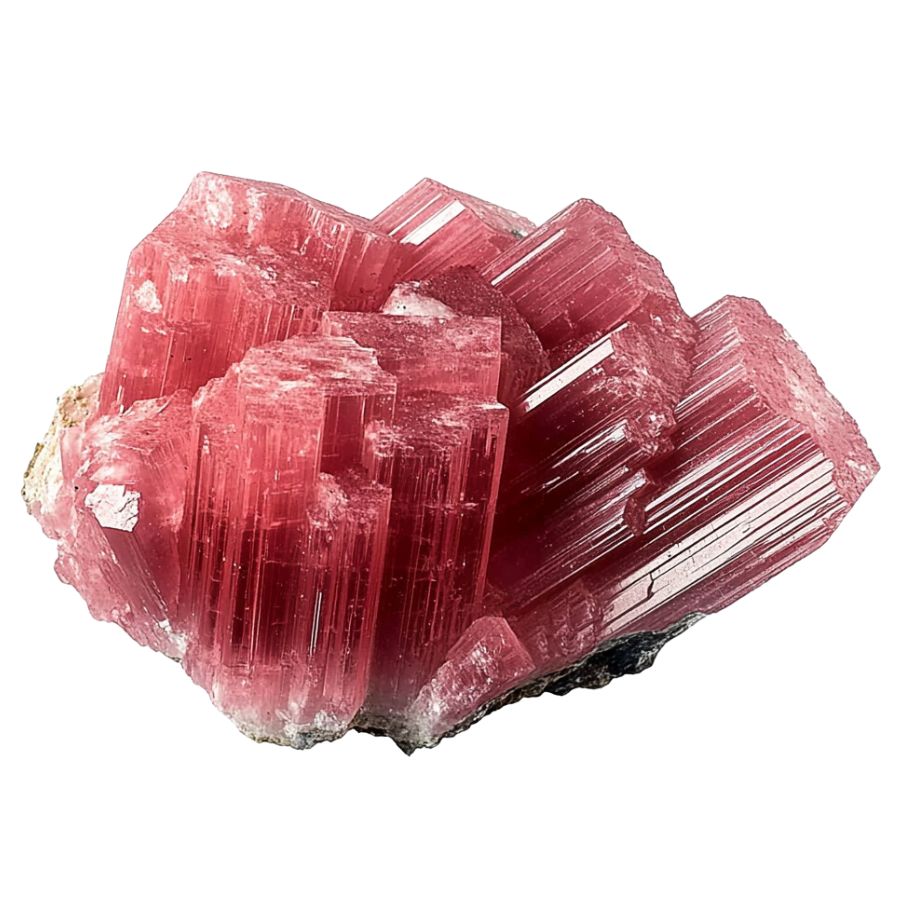
Appreciated for its deep pinks and reds, often complemented by black manganese oxide veins, rhodonite presents a dramatic appearance. It is typically found in metamorphic rocks and is used both as an ornamental stone and in jewelry.
In geology, rhodonite is significant for its role in metamorphic processes and its association with other manganese-rich minerals. It can be found in metamorphosed sedimentary rocks and is sometimes used as an indicator of the presence of manganese deposits.
Vivianite
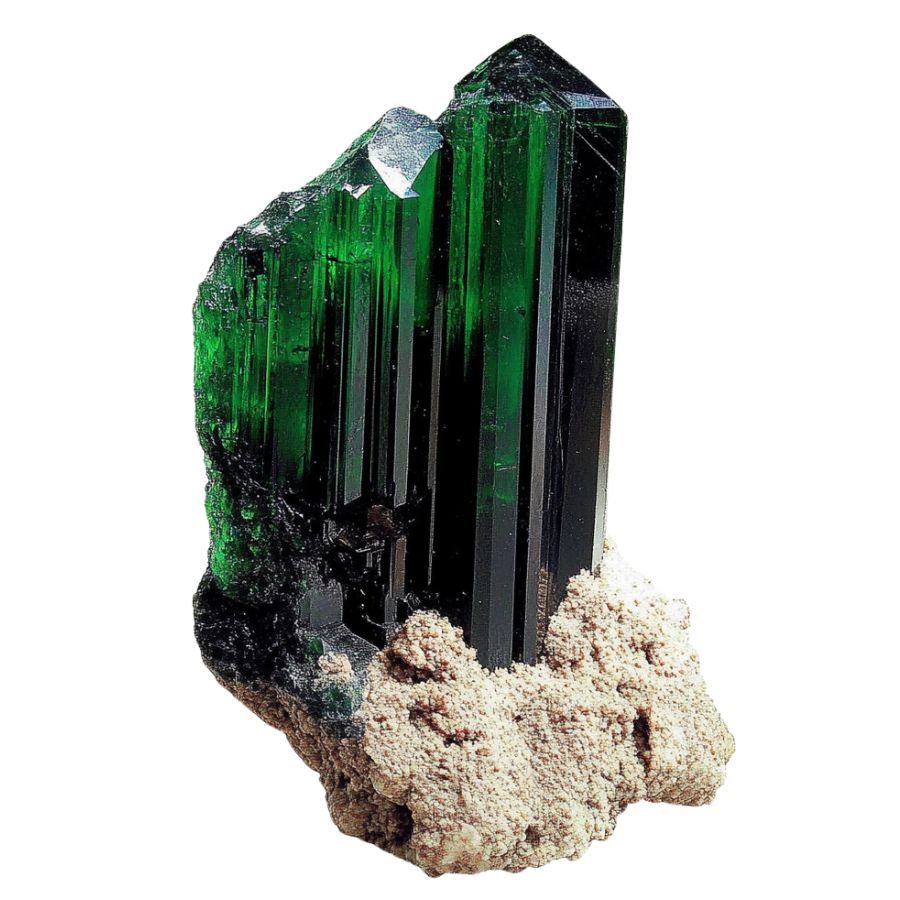
Vivianite, an iron phosphate mineral, emerges in low-oxygen environments like peat bogs or iron-rich deposits. Its striking blue to green color, which can change to a lighter shade over time due to oxidation, makes it a distinctive mineral.
Found in various geological settings, vivianite provides clues about the local conditions and the presence of phosphate deposits.
Crystals you can find in Florida
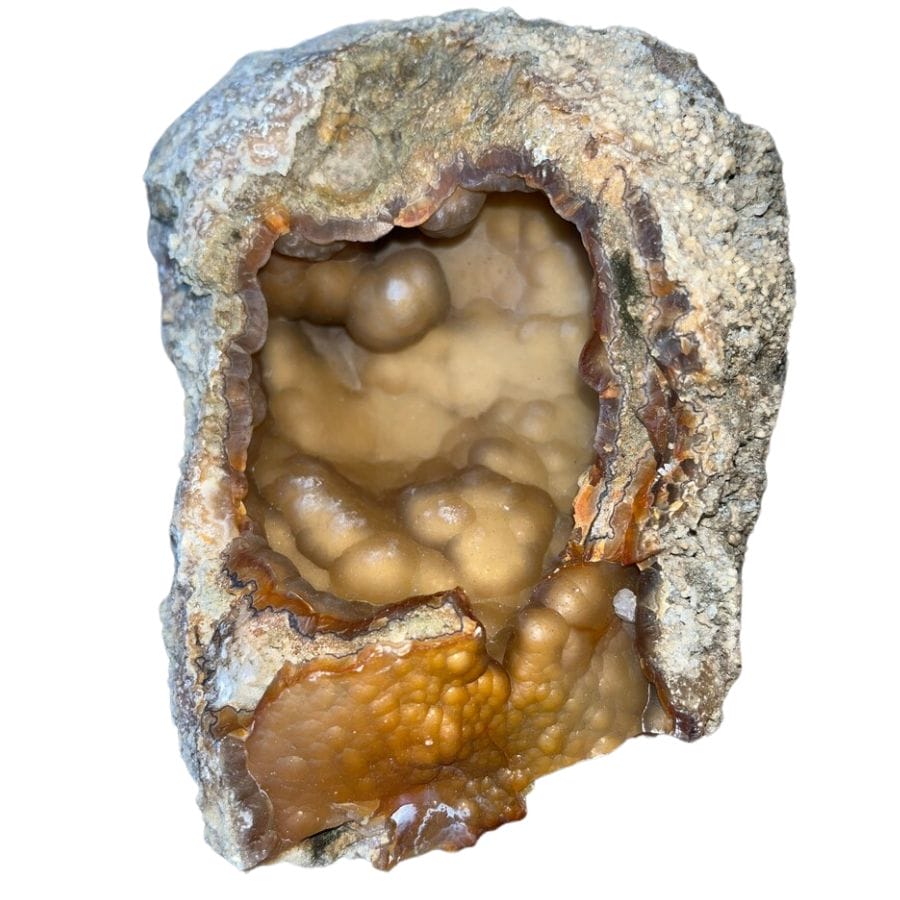
Florida might not be famous for mountains and mines, but it’s home to some really interesting crystals. One of the most notable is agatized coral, which is the state stone.
It’s a unique fossil where silica in groundwater replaces the original coral material, turning it into a form of quartz. Over millions of years, this process creates beautiful, sparkling crystals that have various colors and patterns.
You can also find calcite, which forms in limestone caves. Calcite is known for its transparent or white color and can have different crystal shapes.
In certain areas, phosphate mining uncovers fossilized shark teeth and bones that are often mineralized, turning them into natural stone-like objects.
While our state may not be a hot spot for precious gemstones (there are still a lot of great rockhounding spots, these intriguing and beautiful specimens make it a fascinating place for rockhounds to explore.
Rare crystals found in Florida
- Agatized coral
- Calcite clams
- Carnelian
- Kyanite
- Malachite
More common crystals found here
- Agate
- Calcite
- Chalcedony
- Geodes
- Quartz
- Petrified wood and other fossils
What rough crystals look like
When you’re out looking for crystals on your own it’s important to know what you’re looking for. This is what you need to look out for:
Look for exteriors like this
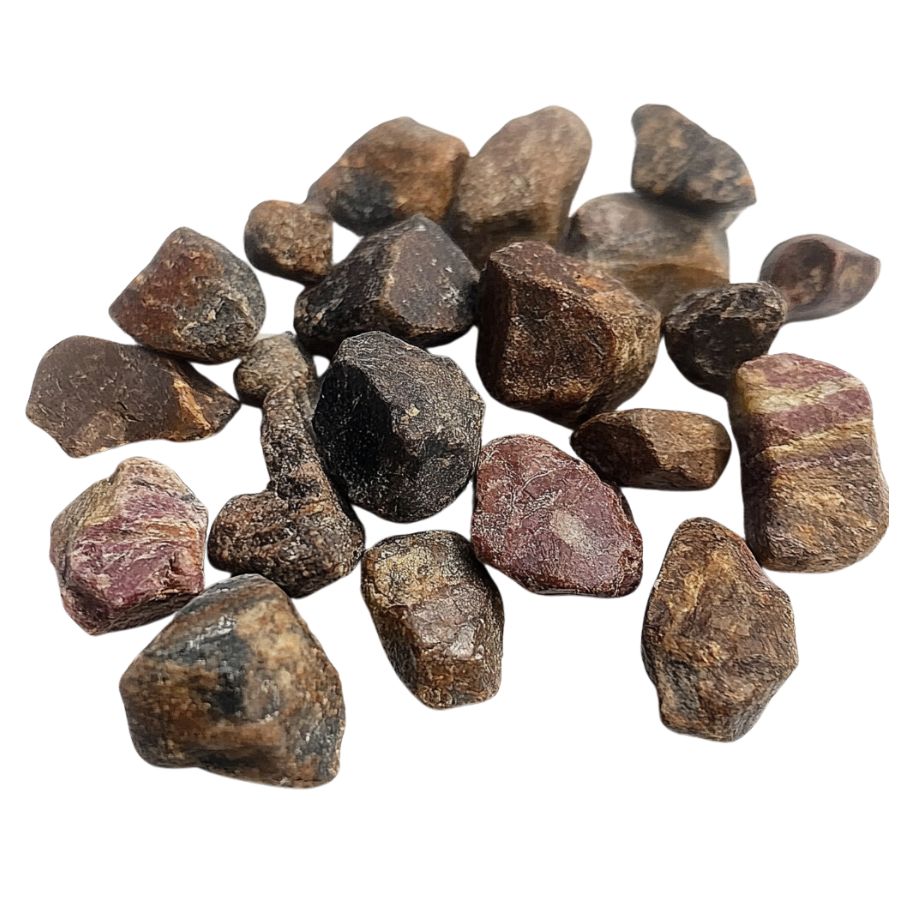
When you’re out searching for crystals in the wild, it’s essential to keep in mind that what you find won’t look like the polished stones you see in stores. One important tip is to consider what certain crystals look like in their raw, natural form.
Without the shine and smooth finish, crystals might appear rough, with jagged edges or earthy tones masking their true beauty. Understanding this can help you spot potential finds that might otherwise be overlooked.
Examine the crystal structure and shape
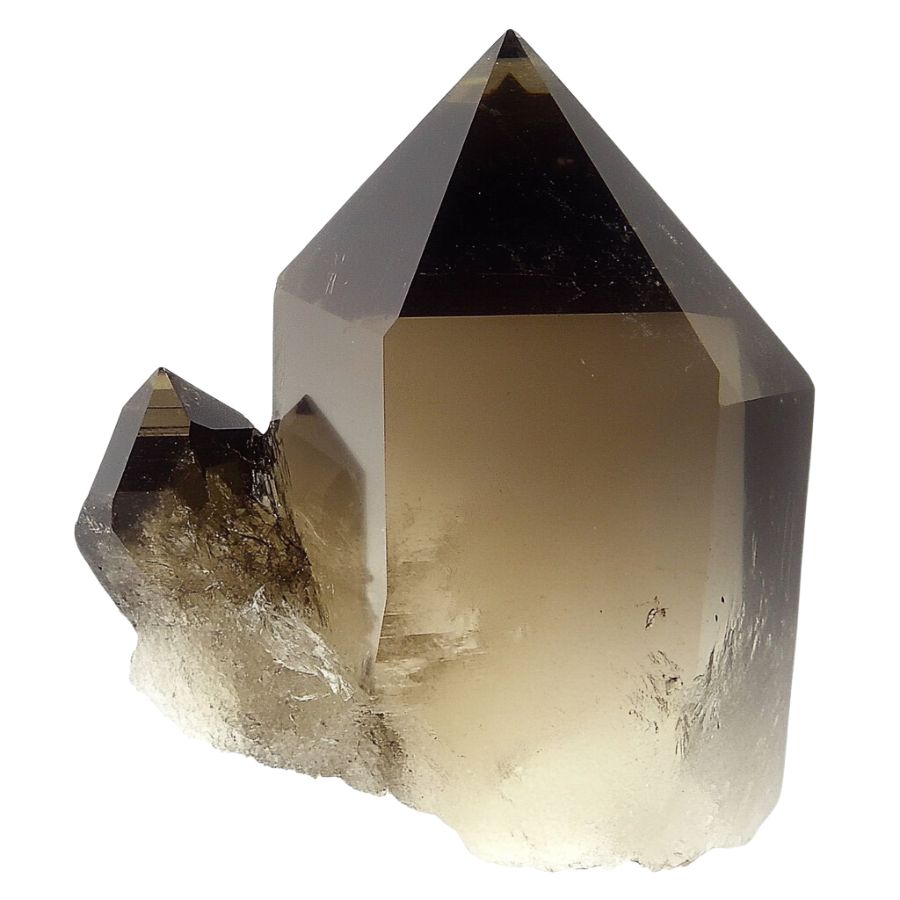
Crystals often form in specific geometric patterns that can be key to identifying them. For example, quartz is known for its hexagonal prisms, while halite typically forms cubic shapes.
By recognizing these distinct patterns, you can differentiate between various types of crystals and better understand what you’ve found.
Observe color
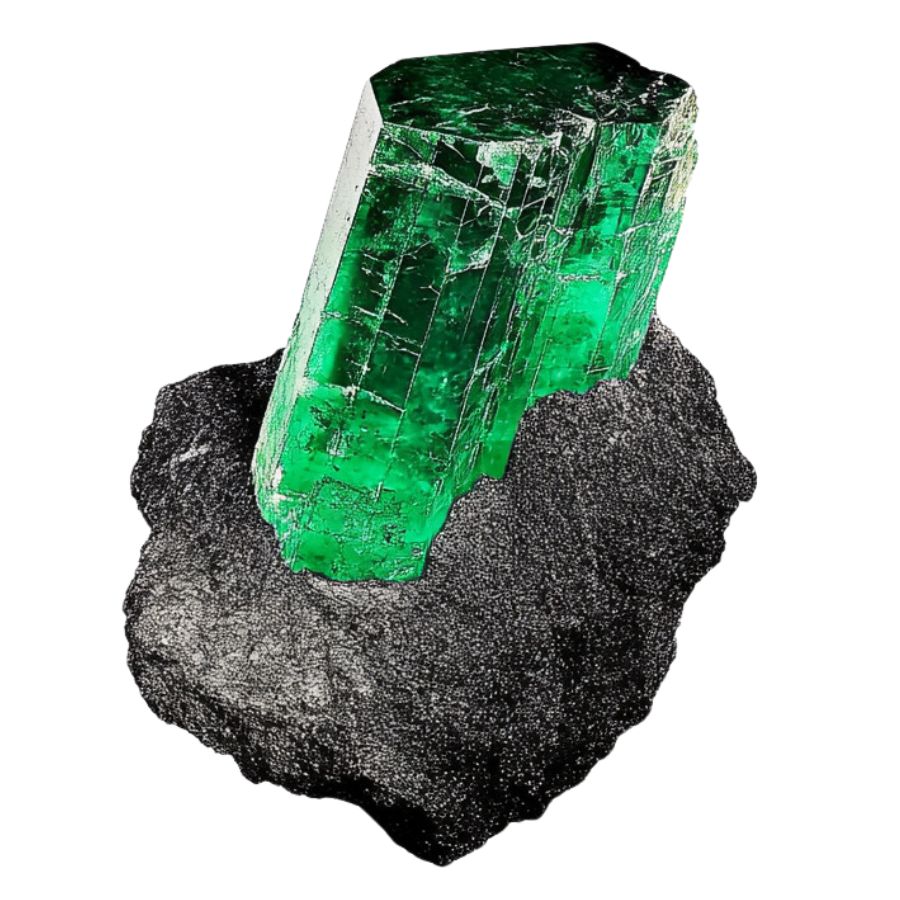
Some crystals are known for their distinct hues, like the deep purple of amethyst or the vibrant green of emerald. However, not all crystals will have strong colors; some may be clear or only slightly tinted.
Check the luster
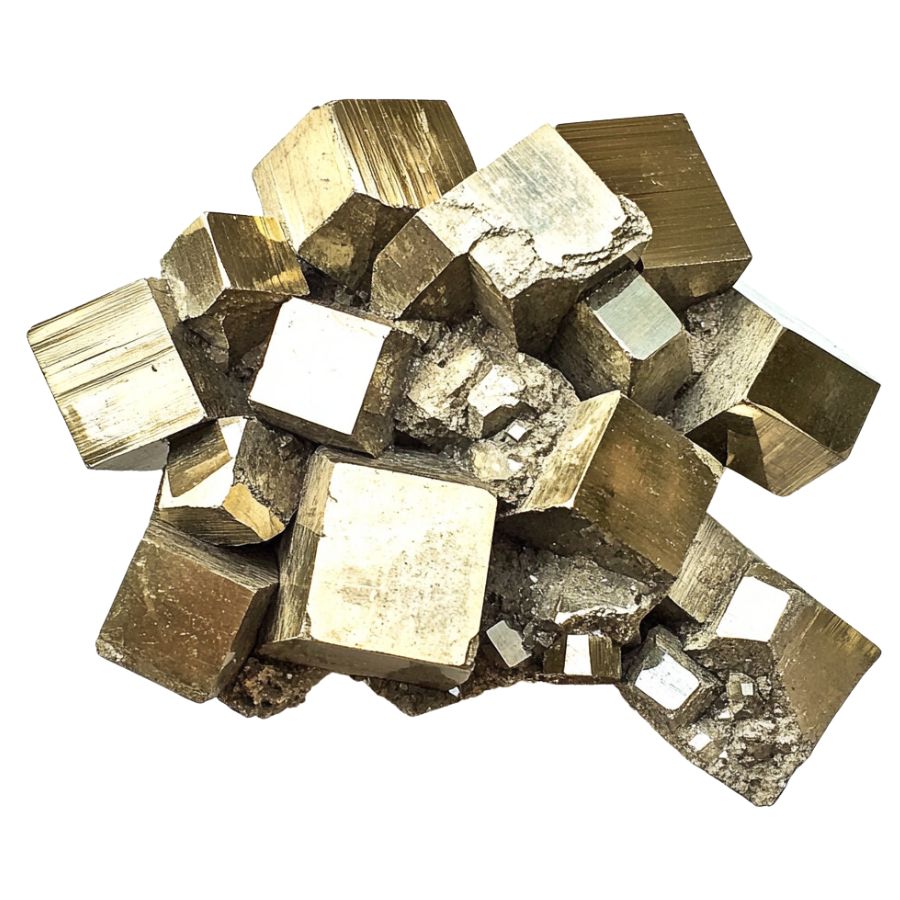
Luster refers to how a crystal’s surface interacts with light. Some crystals might have a shiny, glassy luster, while others may appear metallic or dull. This characteristic can help you determine the type of crystal you’ve found.
However, it’s important to remember that luster isn’t always obvious right away. In some cases, a crystal’s true luster will only become apparent after it’s been cleaned or polished, so keep this in mind as you examine your finds.
Evaluate the transparency
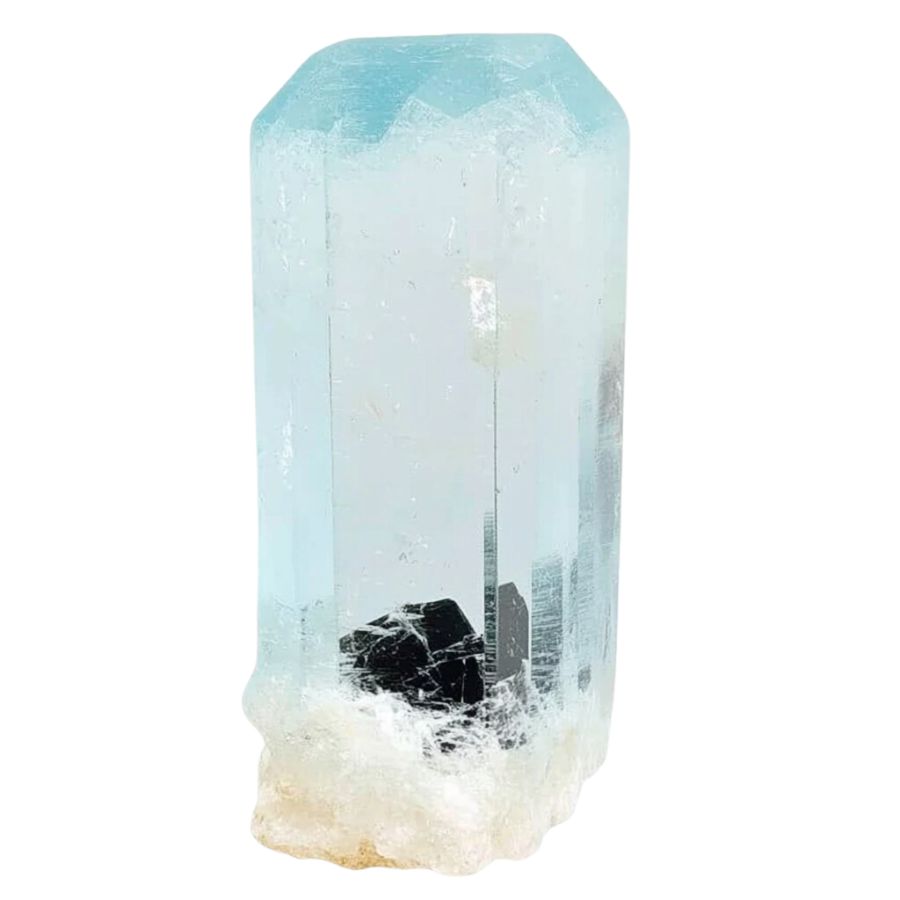
Pay close attention to how much light passes through the crystal. Some crystals are completely clear, allowing light to pass through easily, while others may be opaque and block light entirely.
You might also encounter crystals with translucent edges but opaque centers. These variations in transparency can offer valuable clues about the type of crystal you’ve found, making it easier to identify and appreciate your discovery.
A Quick Request About Collecting
Always Confirm Access and Collection Rules!
Before heading out to any of the locations on our list you need to confirm access requirements and collection rules for both public and private locations directly with the location. We haven’t personally verified every location and the access requirements and collection rules often change without notice.
Many of the locations we mention will not allow collecting but are still great places for those who love to find beautiful rocks and minerals in the wild without keeping them. We also can’t guarantee you will find anything in these locations since they are constantly changing.
Always get updated information directly from the source ahead of time to ensure responsible rockhounding. If you want even more current options it’s always a good idea to contact local rock and mineral clubs and groups
Tips on where to look
Having a better idea of where to look can greatly narrow down your search and increase your chances of finding crystals. By focusing on environments where crystals are likely to be exposed, you can spend less time searching and more time discovering.
Outcrops and Exposed Rock
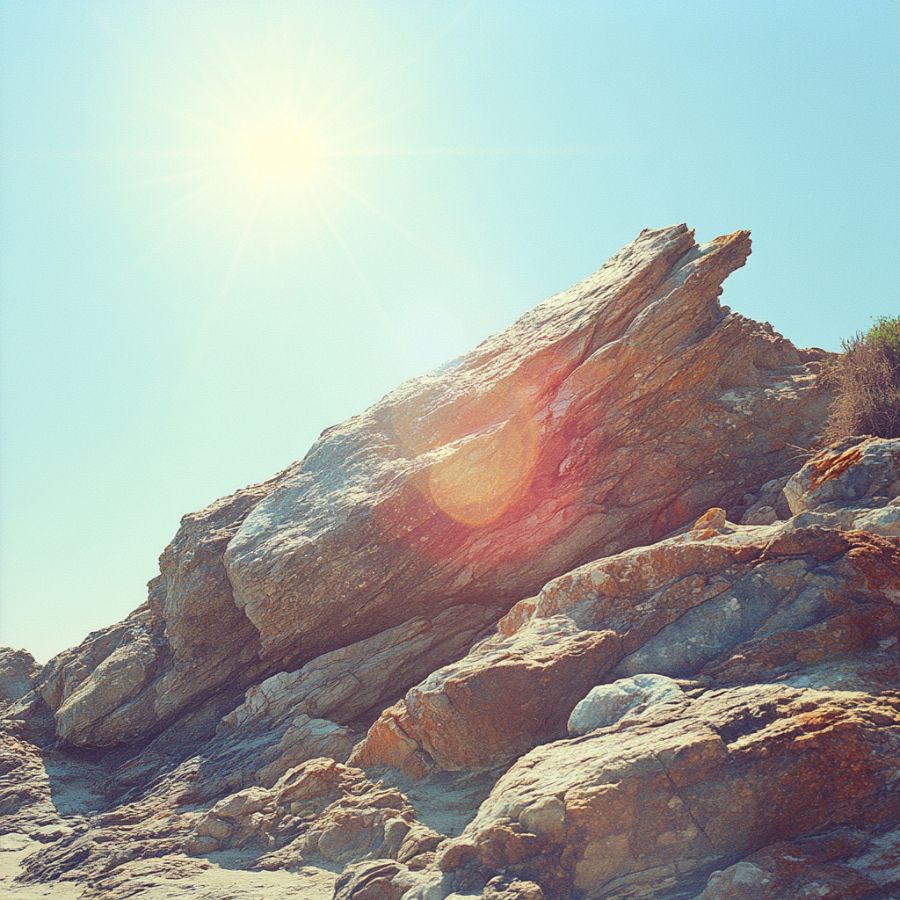
Rocky outcrops are prime locations for finding crystals and minerals. Search along the edges of outcrops, particularly where erosion has worn away the surrounding soil, revealing the rock underneath.
Pay close attention to any visible cracks, crevices, or small cavities within the outcrop, as these are often where crystals develop and can be extracted with minimal effort.
Stream Beds and Gravel Deposits
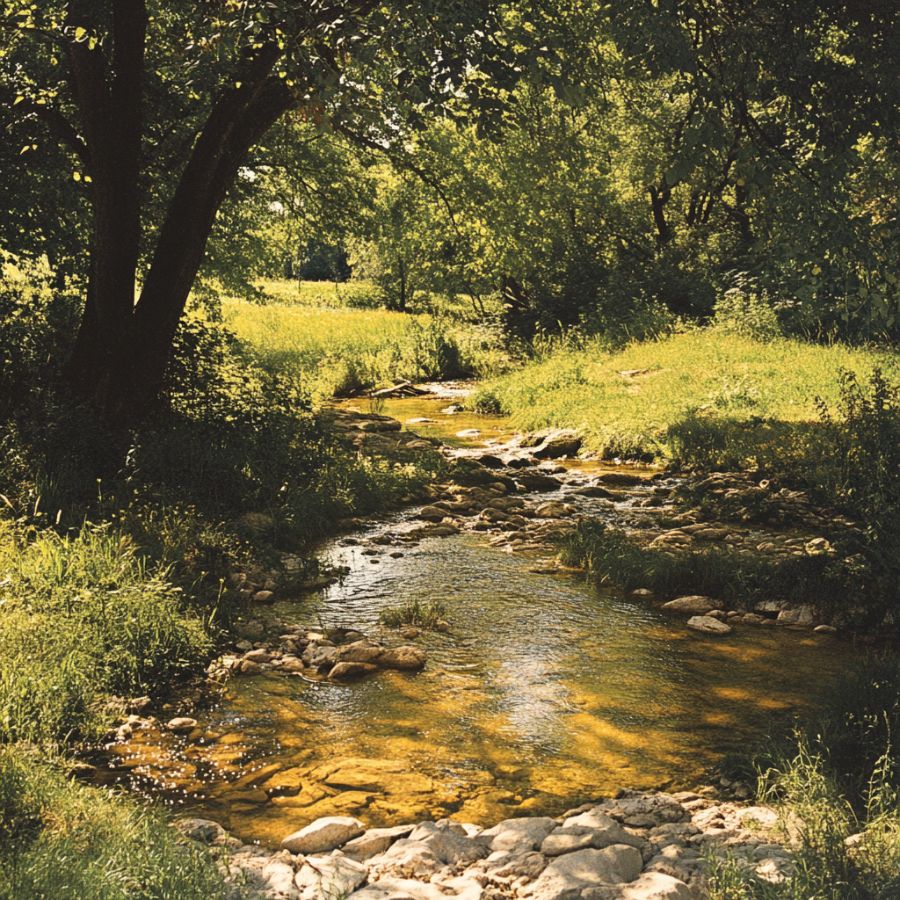
Stream beds are dynamic environments where water flow constantly shapes the landscape. Over time, water can erode rocks upstream, breaking them down and carrying mineral fragments, including crystals, downstream.
When searching in these areas, look for spots where the current has slowed, such as bends in the stream or areas behind large rocks, as these are prime locations for deposits.
Quarries and Mines
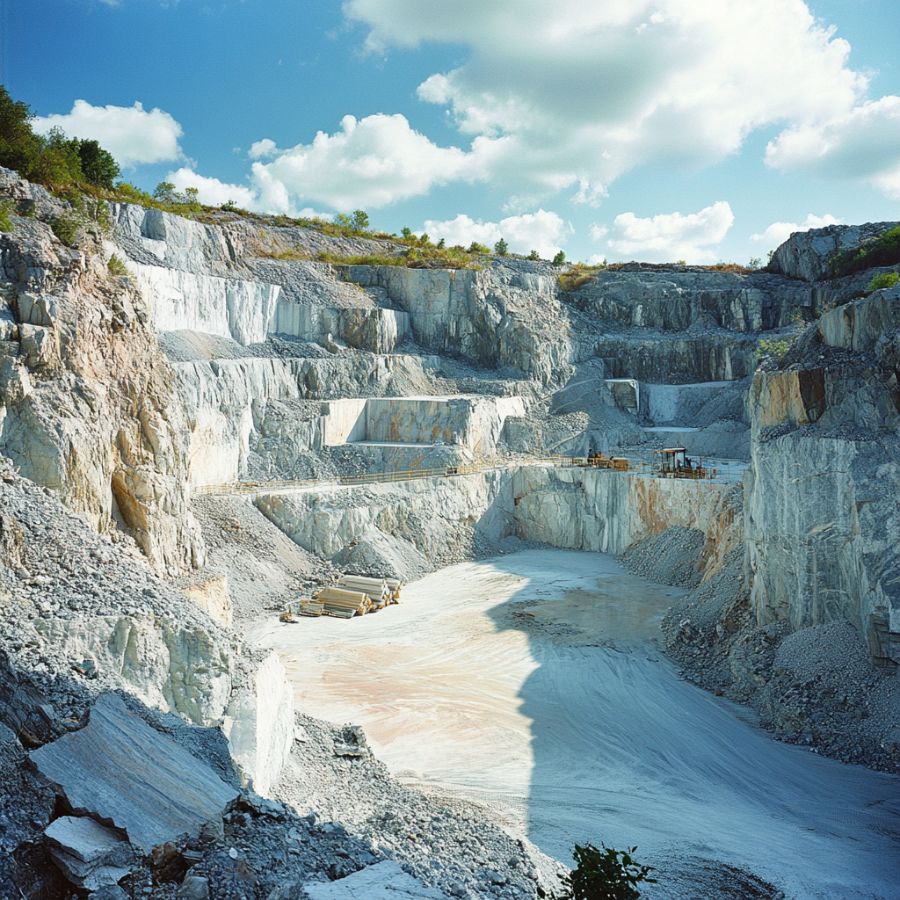
Quarries and mines are excellent places to search for crystals because they expose deep layers of rock that would otherwise be hidden beneath the surface. These sites often contain a variety of minerals and crystals that have been brought to the surface during excavation.
Pay attention to tailings piles, where waste rock is discarded, as they often contain overlooked or broken crystals. Always prioritize safety when exploring these areas and ensure that you have permission to search.
Road Cuts and Construction Sites
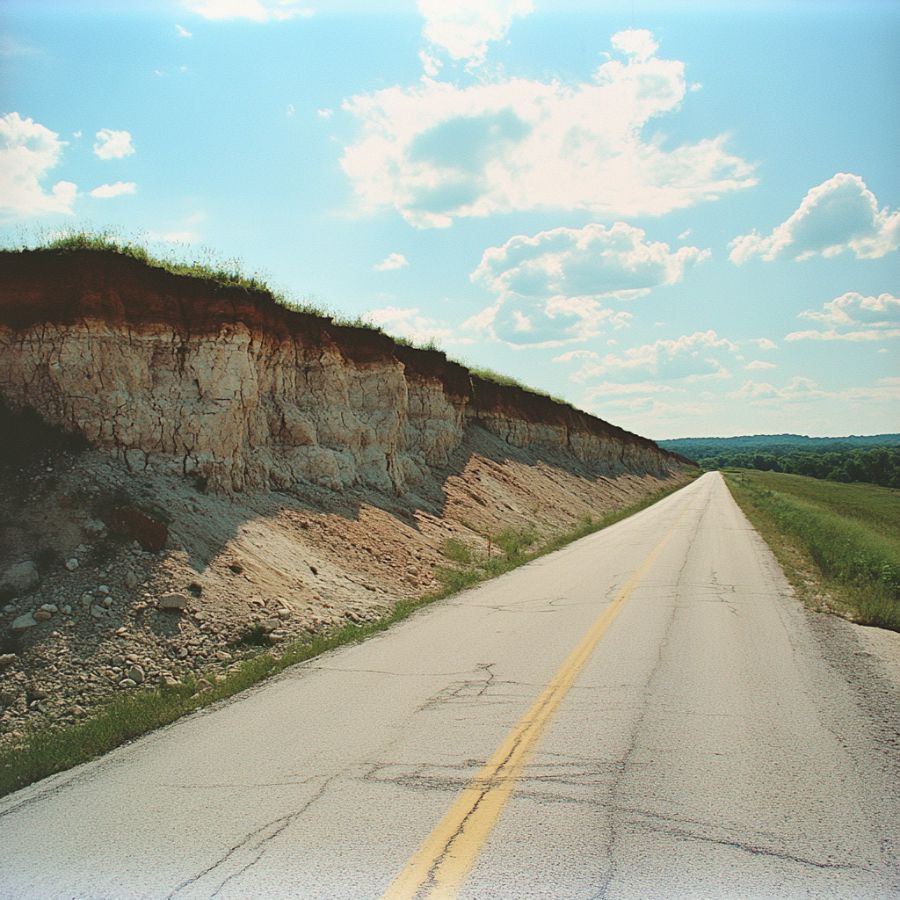
As roads are cut through hillsides or construction projects dig deep foundations, layers of rock and soil that have been undisturbed for millions of years are suddenly exposed.
Look for freshly exposed rock faces, especially where blasting has occurred, as this can create fissures or expose pockets filled with crystals. Be cautious around active construction sites, and always seek permission before exploring.
Mountainous Areas
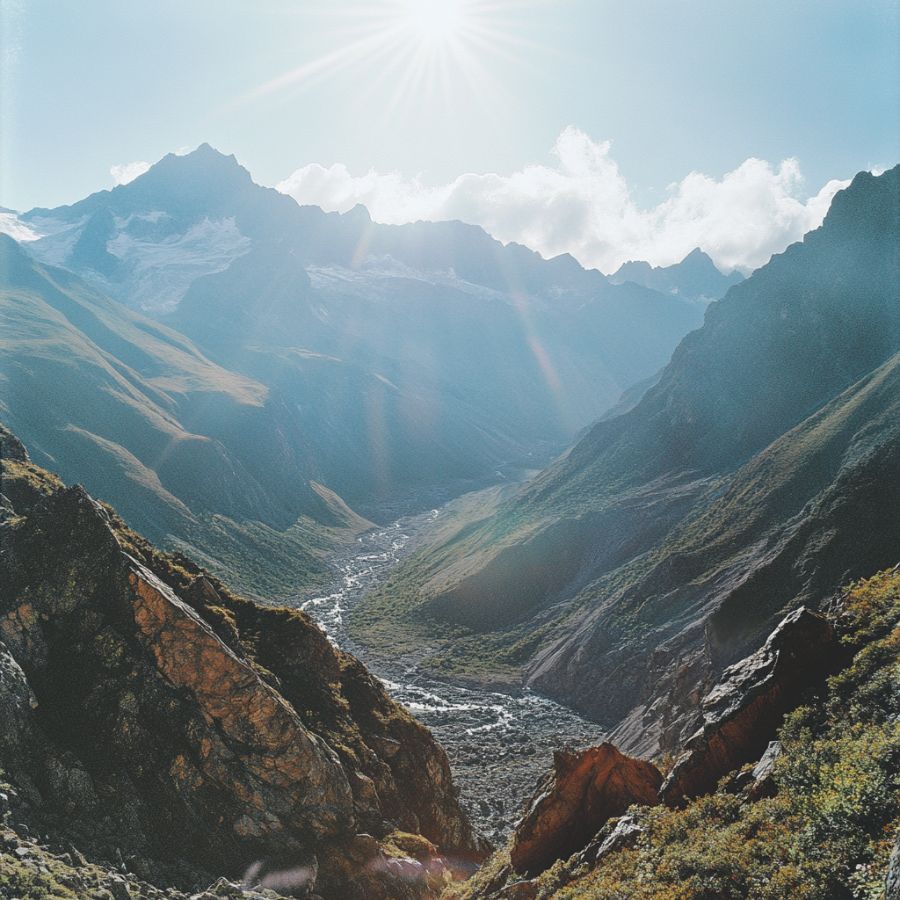
In mountainous regions, erosion caused by wind, rain, and ice can wear away the softer rock, exposing harder crystals that have formed within. Focus on weathered and broken rock formations.
Look for scree slopes, where loose rock has accumulated at the base of cliffs. Additionally, areas near fault lines or volcanic vents are particularly promising, as they often have a higher concentration of minerals.
DON'T MISS OUT ON ANY GREAT FINDS!
While you're out searching for Crystals you're going to find A LOT of other interesting rocks and minerals along the way. The last thing you want to do is toss out something really interesting or valuable. It can be easy to misidentify things without a little guidance.
We've put together a fantastic field guide that makes identifying 140 of the most interesting and valuable rocks and minerals you will find REALLY EASY. It's simple to use, really durable, and will allow you to identify just about any rock and mineral you come across. Make sure you bring it along on your hunt!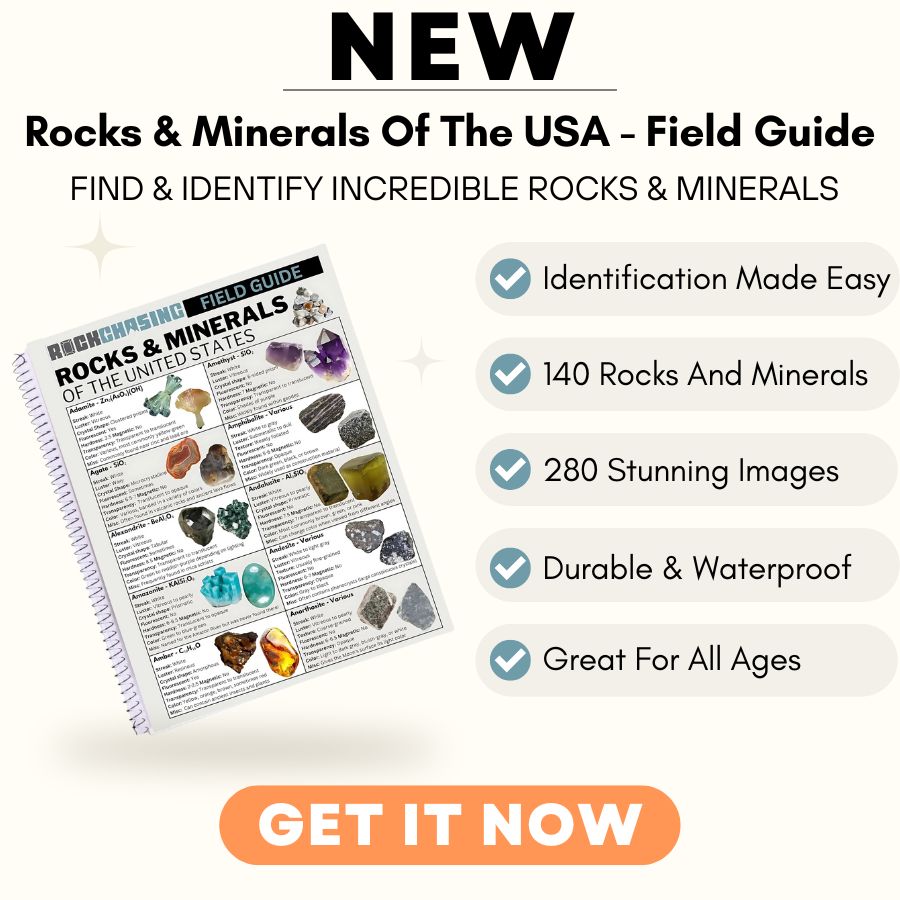
Crystal Mining Laws And Regulations You Need To Know
The state of Florida has a few specific rules and regulations in place for those interested in crystal mining recreationally. It’s important to note that only certain public lands are approved for recreational crystal mining, and the property owner must authorize any activity on private property.
Those wishing to participate in recreational crystal mining in the state must obtain a permit from the local county or municipality and the Department of Environmental Protection. Individuals should also familiarize themselves with all relevant laws and regulations concerning their activities, including resource protection and safety.
Furthermore, it’s important to note that any collected minerals may not be sold or traded without obtaining approval from the appropriate government agency. By following these guidelines, individuals can ensure their activities are safe and legal.
- The extensive local experience and understanding of our team
- Input from multiple local crystal hunters and crystal collecting groups
- The accessibility of the crystal mining locations
- Safety and potential hazards when collecting
- Private and public locations
- A desire to include locations for both experienced crystal hunters and those who are just starting out
Using these weights we think we’ve put together the best list out there for those who love finding new crystals for our collections!
The Best Locations For Crystal Mining We’ve Found
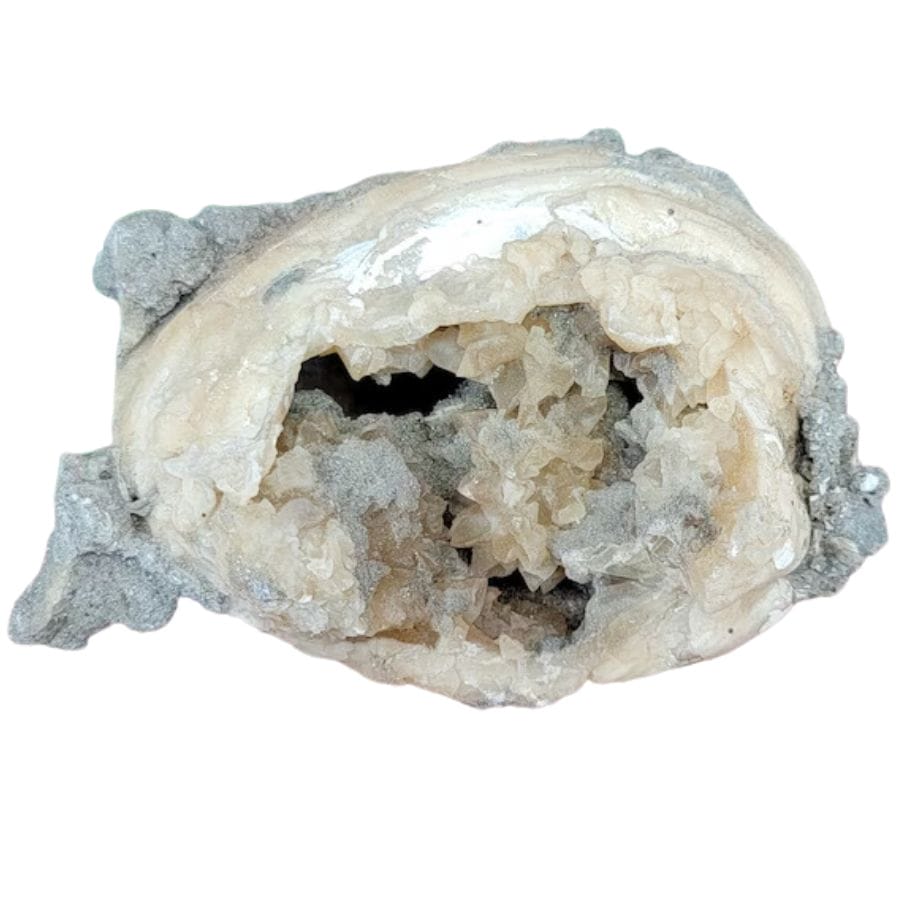
If you only have time to travel to a few places, check these locations out. We’ve had the most success in these areas, and we think you will too.
Always Confirm Access and Collection Rules!
Before heading out to any of the locations on our list you need to confirm access requirements and collection rules for both public and private locations directly with the location. We haven’t personally verified every location and the access requirements and collection rules often change without notice.
Many of the locations we mention will not allow collecting but are still great places for those who love to find beautiful rocks and minerals in the wild without keeping them. We also can’t guarantee you will find anything in these locations since they are constantly changing.
Always get updated information directly from the source ahead of time to ensure responsible rockhounding. If you want even more current options it’s always a good idea to contact local rock and mineral clubs and groups
Ruck’s Pitt
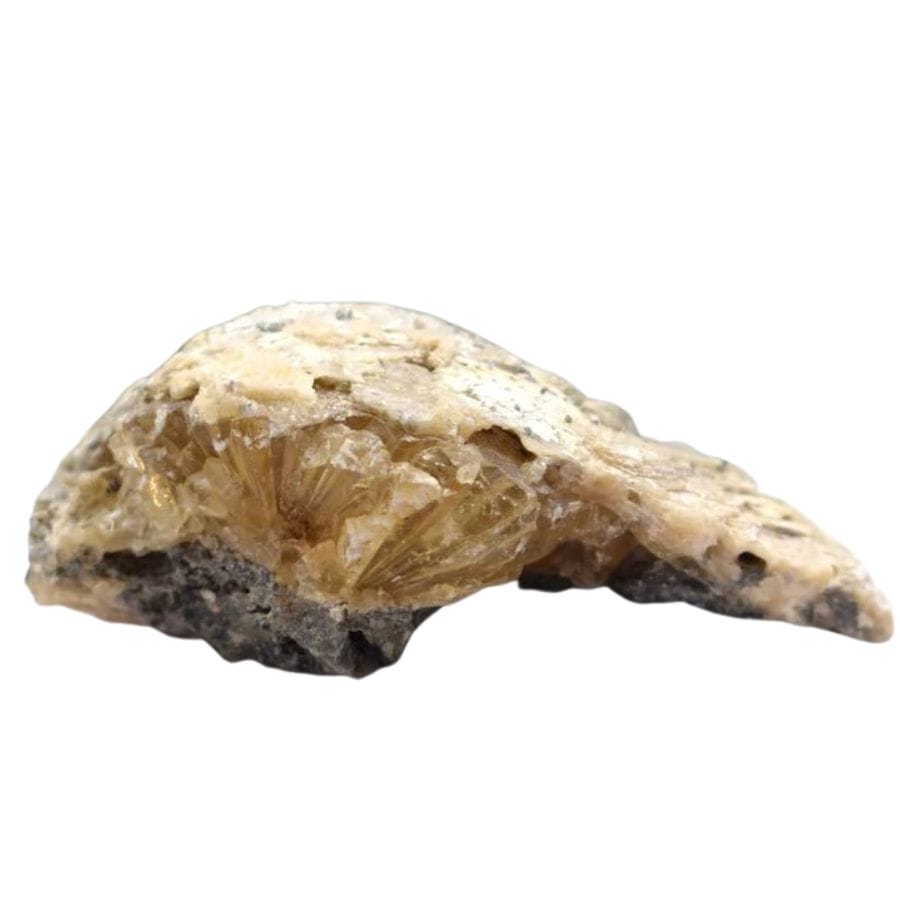
If you’re near the Okeechobee area you need to check out Ruck’s Pit or the Fort Drum Crystal Mine. This is easily one of the best places in the state to find golden honey calcite and fossilized calcite clams. It’s quite unusual to be able to find both of these in a single place.
You’ll be able to dig through various piles and mine dumps that are pretty accessible. Sometimes they even have hoses available to spray down your dig site to make it easier to find calcite and other sparkling gems.
The mine is often open to the public but you will want to call ahead and make sure you can get in on the day you’re planning.
Where we found crystals at the Rucks Pit
The best place to look is going to be in the different piles and dumps that are available to dig through. That’s going to be the easiest way to find the calcite clams and other calcite pieces.
Crystal River
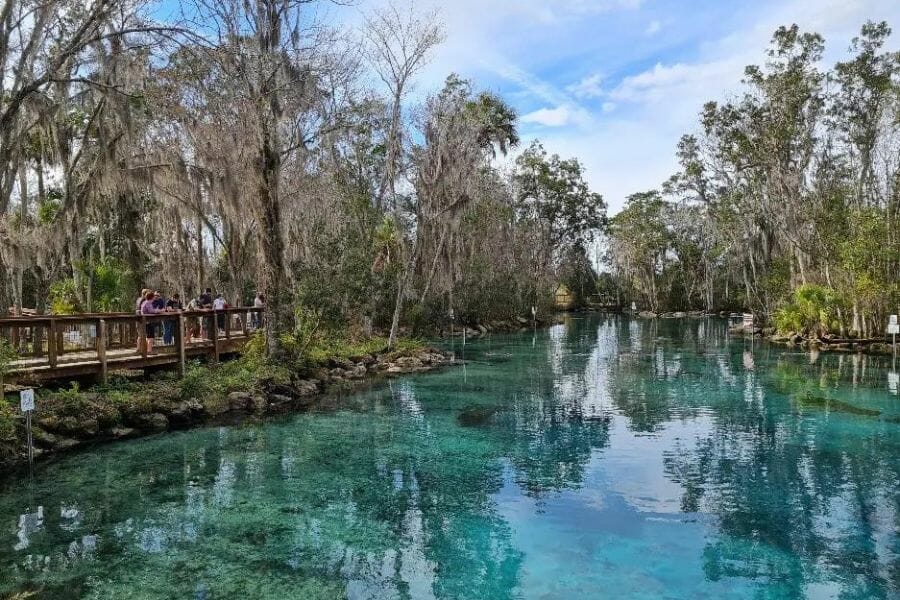
The Crystal River might be worth a look if you’re seeking a nice location in the state to uncover some stunning crystals. It’s not difficult to understand why crystal hunters have long considered this ancient site to be one of their favorite spots.
Located in Citrus County, the river gets its name from the crystal-clear water that flows through it. The river has a rich history, with evidence of human habitation dating back over 10,000 years.
This is also one of the greatest places to look for gems in Florida.
Where we found crystals at the Crystal River
We had the most success searching for calcite and quartz crystals in limestone quarry seams and vugs of Crystal River.
DON'T MISS OUT ON ANY GREAT FINDS!
While you're out searching for Crystals you're going to find A LOT of other interesting rocks and minerals along the way. The last thing you want to do is toss out something really interesting or valuable. It can be easy to misidentify things without a little guidance.
We've put together a fantastic field guide that makes identifying 140 of the most interesting and valuable rocks and minerals you will find REALLY EASY. It's simple to use, really durable, and will allow you to identify just about any rock and mineral you come across. Make sure you bring it along on your hunt!
Hillsborough County
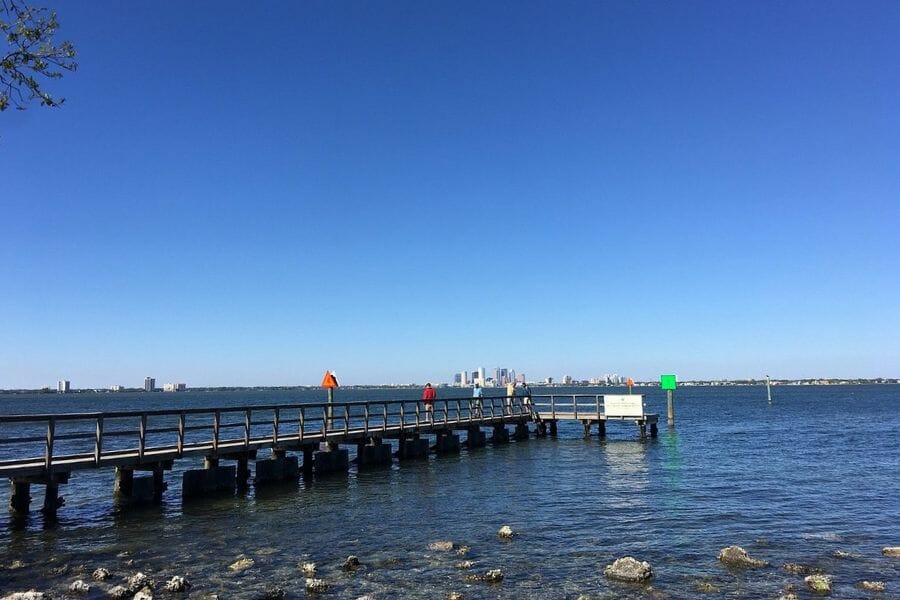
Hillsborough County is a diverse and vibrant location that’s well worth a visit. The geography and geology make it a unique and fascinating location for crystal hunters. It’s situated on the Gulf of Mexico and features a variety of terrain, including wetlands, forests, and coastal areas.
The underground aquifers that run through the county are rich in minerals, creating an environment where crystals can thrive. The county has several crystal mines and quarries where you can dig for your crystals and minerals.
These mines are often open to the public and provide a fun and educational experience for people of all ages.
Where we found crystals in Hillsborough County
There are plenty of excellent options accessible here. Try the following locations to get started:
- Chalcedony may be found at the Interbay Boulevard and Bayshore Boulevard
- You can also locate chalcedony crystals at Ballast Point’s shoreline along Hillsborough Bay.
If you’re wondering how much do crystals cost, we’ve made a thorough guide for you to learn more about them.
Hillsborough River
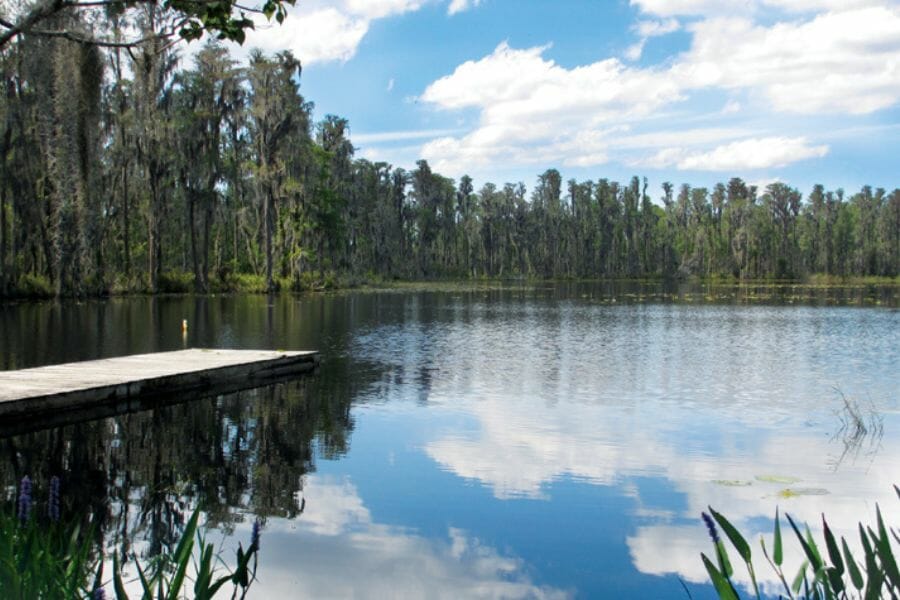
The Hillsborough River is a beautiful, winding waterway that you have to visit at least once. It’s a great place to explore, especially if you’re searching for crystals.
Its geography and geology make it an ideal spot for crystal hunters, as the river is known for its agate and quartz deposits. The water is usually warm and shallow enough to wade into, making it easy to find gems in the sand or shallow pools.
Where we found crystals in the Hillsborough River
We mostly found agate crystals in the banks and breaks along the Hillsborough River.
Pasco County
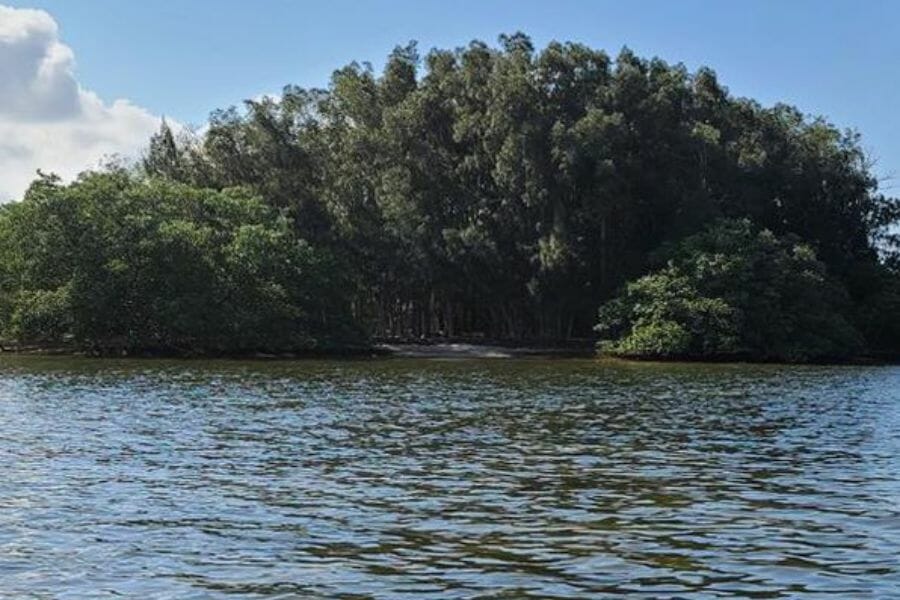
Pasco County is located in the western part of the state and is known for its limestone formations. The area has been known for crystal hunting since the late 1800s when miners discovered large deposits of crystals, like chalcedony and quartz, and other minerals.
The county’s geography is mostly flat, with rolling hills and valleys, and its soils are generally sandy with limestone outcroppings. You can find some of the best spots for crystal hunting along the rivers, creeks, and springs that flow through the county.
Where we found crystals at the Pasco County
Calcite and Chalcedony are abundant in area quarries and excavations of New Port Richey and Bailey’s Bluff in Pasco County.
Pinellas County
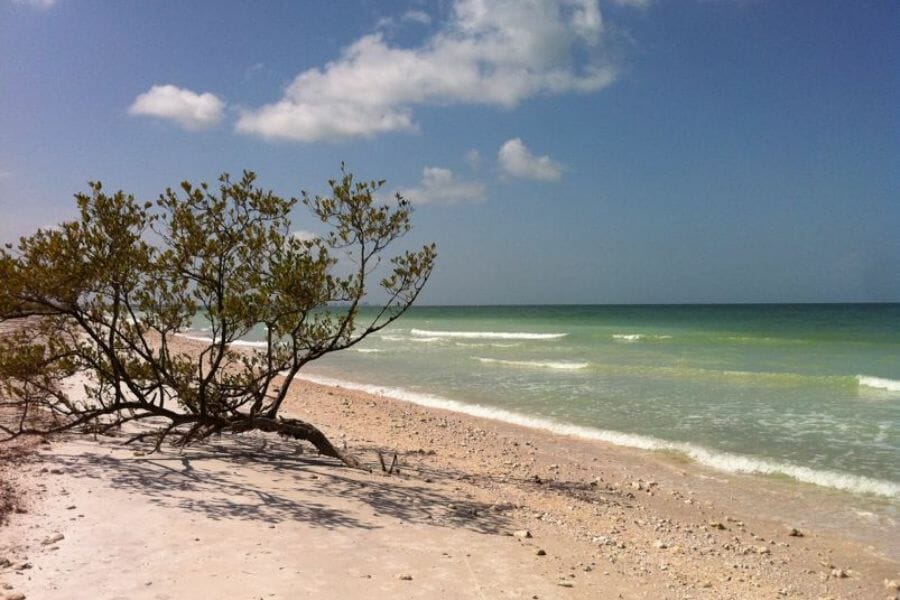
Pinellas County, located in the Suncoast region, has abundant crystal collecting opportunities if you want something unique.
With its limestone geology, Pinellas County is home to many beautiful crystal specimens. Some of the largest crystals ever found were unearthed in this area! Whether you like to scour the beaches or explore the woods, you’ll have plenty of chances to come across beautiful crystals here.
Its mild climate and year-round sunshine make it easy to get outdoors and enjoy all Pinellas County offers.
Where we found crystals at Pinellas County
We had the best luck locating chalcedony at the banks of the Caladesi Causeway and the Tarpon Springs area. There are also agate, carnelian, and chalcedony in all regional excavations or dredging operations.
Our Other Favorite Places For Crystal Hunting
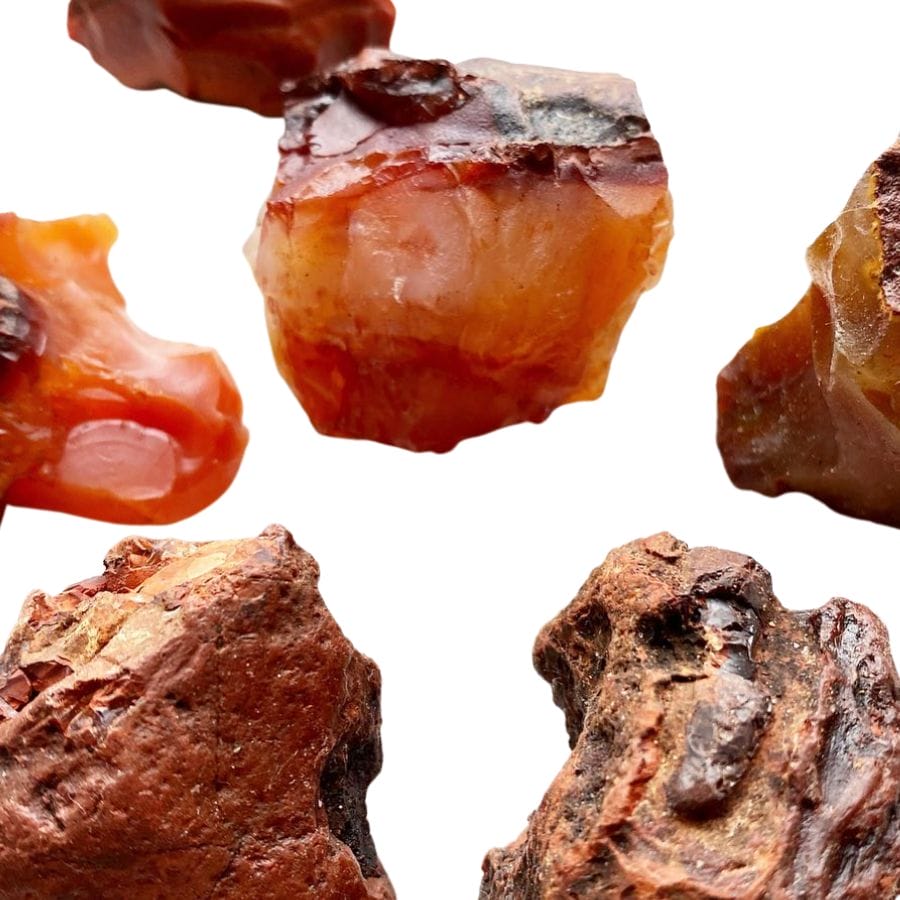
After sharing my top five locations above, I wanted to give you many more options. There are many wonderful places to hunt for crystals and geodes in a state the size of ours, especially with such geological diversity. Here are some other places to visit:
Where you can find crystals for free
Let’s start by talking about several places where you can search for free (yes, for free!). Although many of the most amazing places have a fee, there are areas you can visit without paying for anything.
| County | Location |
| Charlotte | You can find calcite crystals in the Punta Gorda area |
| Hamilton | Collect agates in the creek beds of White Springs area |
| Hernando | Calcites are abundant in the Brooksville region |
| Hernando | Calcites are available in all dredging or deep-digging construction projects county wide |
| Jackson | Calcites are found in limestone quarries county wide |
| Polk | You can find chalcedony crystals in the northeast of Lakeland |
| Polk | Chalcedony crystals are available to find in new diggings of irrigation of Kathleen area |
| St. John’s | Collect calcites along ocean beaches county wide |
| St. John’s | Calcites are found in quarries county wide |
| Washington | In Chipley’s sinkhole and roadcuts, you may find calcite crystals |
| Washington | Calcite crystals can be collected in the south of the airport and in a railroad cut in the Chipley area |
Other great places to dig for crystals
If you’re willing to pay some money to find crystal, here are the other places to go. The cost will depend on the season; it can be free occasionally, so contact them beforehand.
| County | Location |
| Bradford | Highland Mine for kyanite |
| Suwannee | The mine in Dowling Parks for malachite |
The Best Crystal Shops In The Area
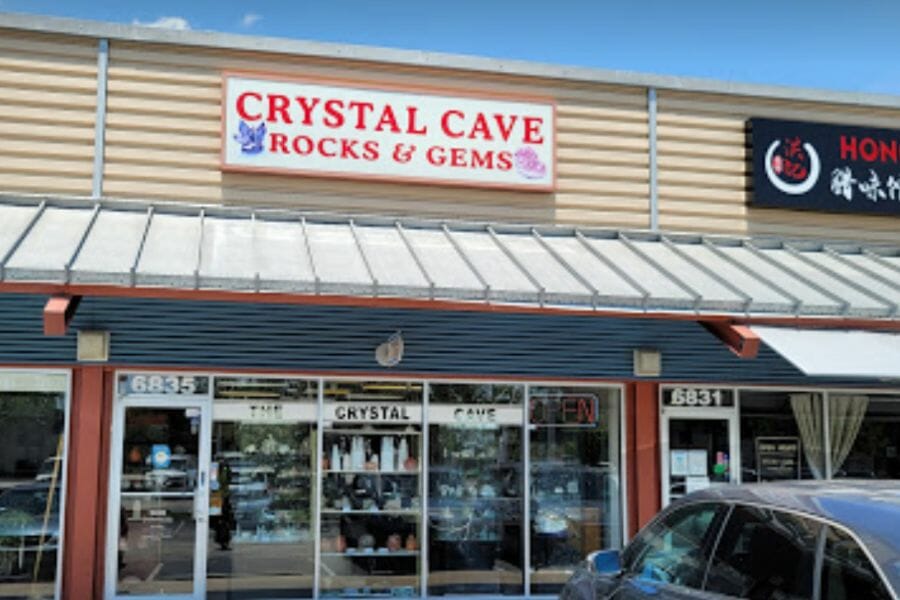
Many of us enjoy making little purchases to complete our collections because the state offers a wide range of crystals dispersed across such a huge area. These are the best crystal shops we’ve found if you’re looking for distinctive and beautiful pieces for your collection.
- Crystal Cave Rock and Gem Shop – 6835 Stirling Rd, Fort Lauderdale, FL 33314, United States
- Crystal Gaze – 213 Frank Lloyd Wright Way, Lakeland, FL 33803, United States
- The Curious Muse – 20651 US Hwy. 441 Row C space 52, Mt Dora, FL 32757, United States
- Hidden Gem SRQ Crystals – 6526 Gateway Ave, Sarasota, FL 34231, United States
- Lost Mines of Atlantis – 10404 US Hwy 27 S, Sebring, FL 33876, United States
- Loving Thyself Rocks – 339 S Park Ave, Winter Park, FL 32789, United States
- Mystic Minerals Herb – 4809 S Orange Ave, Orlando, FL 32806, United States
- Rocks, Crystals, and Gems – 28250 Paseo Drive Suite 160, Wesley Chapel, FL 33543, United States
- We Rock Rocks – 14975 N Nebraska Ave, Tampa, FL 33613, United States
- Your Crystal Shop – 2100 N Courtenay Pkwy, Merritt Island, FL 32953, United States
Additional places to find crystals in nearby states
If you’ve already tried all of our recommendations above or are planning a trip out of the state, you should check out our guides for neighboring states:
If you have any recommendations we haven’t covered please leave them in the comments below!

